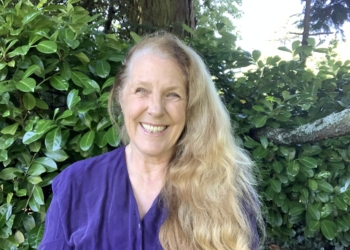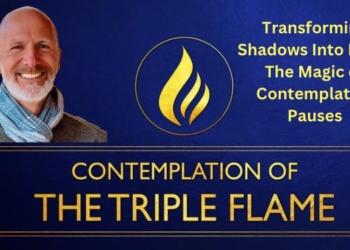
Author: Greg Hammer, MD
A favorite quote from one of my heroes, Dr. Jon Kabat-Zinn, the creator of the “Mindfulness Based Stress Reduction (MBSR)” course is: “Mindfulness is awareness that arises through paying attention, on purpose, in the present moment, nonjudgmentally.” [1] This could also be considered the definition of happiness, which is the one goal that each of the 8 billion of us on this planet share. It is clear that happiness exists in the only moment we ever truly experience – the present moment.
We also recognize that judgment often clouds our experience with our biases and preconceptions. Judgment prevents us from seeing and experiencing the world as it truly is. Learning to let go of our judgment is one of the keys to happiness.[2] It is easy to understand that to be happy we should shift our focus to the present moment and be less judgmental – but why does Dr. Kabat-Zinn include the phrase, “on purpose?”
Our brains have become hard-wired over tens of thousands of years to include networks that are no longer adaptive. For example, we all have a negativity bias. We tend to forget the positive and focus on the negative. We may notice an ache or pain as we awaken in the morning – that becomes the center of our attention as we begin our day. We rarely wake up and marvel at the amazing complexity of the human body, grateful that (almost) everything is working well.
It has been said that 80% of our thoughts are negative and only 20% are positive. I have worked with trainees in anesthesiology or critical care medicine who provided flawless care for a complex patient in the operating room or intensive care unit; perhaps they needed my help for one difficult procedure in a small child but did everything else skillfully. We debrief at the end of the day and I praise them for the excellent job they did, including the procedures they performed well.
As they prepare for bed that night, do they feel satisfaction at the terrific job they did at the hospital that day? Unfortunately, they all too often obsess over the one task for which they needed assistance. This is typical of our negativity bias. We all think this way. Even the most accomplished film stars, doctors, and business executives suffer from the “impostor syndrome” of negative self-judgment.
Another way our brains are wired that appears to veil our happiness is our obsession with the past and future. While it is adaptive to consider our past joyful moments and even our mistakes, to the extent that we learn from them and do not keep repeating them, we also have a tendency to overthink the past. Our negativity bias can invoke shame, regret, low self-esteem, and often depression.
Likewise, our hyperfixation on the future is also rooted in negativity. We catastrophize. We think of the worst things that can happen, even though they almost never do. These ideations lead to fear and anxiety. Perhaps our brains evolved this way 50-100,000 years ago during a time when our forebears sat in their caves wondering whether a saber-toothed tiger was lingering just outside. Perhaps this genetic inclination towards hypervigilance was adaptive back then for the sake of survival and genetic evolution, but today we are stuck with those thought patterns, which are no longer beneficial for most of us living in relative safety.
So how do we cope with these adverse ways of thinking that distract us from the peace and joy taking place in our present moment? It takes a plan – it requires purposefulness. It calls for our often hidden power of intention.
The good news is that our brains have a magical quality called neuroplasticity. We have the ability to actually change the way our brains are wired for the better. We can redirect our thoughts toward the present moment and prioritize a more optimistic and positive outlook. In order to do so, however, we need a plan. We have to be intentional. Without purposefulness, we will inevitably lapse into to our old ways of thinking – gloomy and distracted.
Let’s have a look at one practice that can be done in as little as 3 minutes a day that is proven to gradually reprogram the way we think and experience. The GAIN practice embraces mindful breathing and contemplative meditation.
It is logical to think, “Of course, I am breathing all day and all night – why do I need to be intentional about breathing?” The answer is simple – we can go days without taking a deep, lung-opening breath. Chronic stress causes tension in the breathing muscles in our chest and abdomen. Our breaths may be shallow and constrained for days on end. This causes the tiny air sacs in our lungs, called alveoli, to collapse – especially those at the bottom portion of our lungs. This condition is called atelectasis, and it limits the amount of oxygen that we extract from the air, leaving our brains and other organs deprived of optimal oxygen supply.
In fact, slow, deep, intentional breathing has another benefit – it activates our parasympathetic nervous system. This is the part of our nervous system that keeps the sympathetic nervous system, responsible for the “fight or flight” response, in check. Activation of the parasympathetic nervous system, through purposeful, slow, deep, breathing lowers the amount of adrenaline and cortisol in our bodies. This causes our heart rate, blood pressure, and blood sugar to drop to healthier levels. All this takes is tapping into our power of intention.
Many people think that meditation means sitting perfectly still for a half hour or more while banishing all thoughts from our brains. This is not true! The GAIN meditation not only takes as little as 3 minutes, but encourages us to focus on a self-guided tour of essential thoughts. The 4 elements represented by the acronym GAIN are Gratitude, Acceptance, Intention, and Nonjudgment.2 Why these 4 components? Because they are the essence of happiness. These 4 ingredients are embodied by almost all religious and philosophical traditions – for good reason.
Let’s have a look at the GAIN practice. We begin by opening the blinds upon awakening each morning, letting in the natural light. We find a comfortable place to sit and close our eyes. To augment the meditation, we may initiate soothing sounds with a gong or singing bowl – or perhaps several that resonate in harmony. We focus on the breath, inhaling through the nose to a slow count of 3, pausing to a count of 3, and exhaling to a count of 4. We breathe into our abdomen, pause, and let the breath go without effort.
We begin to contemplate that for which we experience Gratitude – our relative health (perhaps not perfect, but it sure could be worse), safety and warmth of our home, our loving relationships with friends and family. We connect these positive thoughts with our breathing.
We transition to Acceptance, acknowledging that pain is as much an intrinsic part of our experience as joy. We focus on a painful or uncomfortable experience – perhaps the loss of a loved one or precious friendship. We bring this pain closer and closer. We imagine opening our chest and our heart, bringing this pain closer and embracing and nurturing it with our heart.
We discover that the pain is not as bad as we imagined, and that we can live with it. We then concentrate on our Intention. We might focus on our present sensations – the pressure of the chair against our body, the softness of the air we breathe, the tingling sensation on the bottom of our feet. We stay there for 5 or 10 seconds, linking this present moment with our breath. We may gradually lengthen this “present sensation” experience each day by a few seconds, training our minds to be right here right now.
One baby step at a time. We confirm our Intention of being more positive and more present throughout the day. Finally, we contemplate Nonjudgment. We might picture a beautiful NASA image of the Earth apparently suspended in space. We recognize that the earth is simply a planet – it is neither good nor bad. It is simply the planet that it is. It is only logical, then, to acknowledge that we are just human beings – we, too, are neither good nor bad. We are simply the human beings that we are.
We silently pronounce, “I am neither good nor bad. There is no judgment. I am simply the person that I am. ” We may then repeat “I am, I am….” as we link this phrase to the slow, deep breath we enjoy. We then slowly open our eyes – we are ready to go out into the world. We may complete the GAIN meditation by sounding the gong or singing bowl once more.
Something remarkable happens as we embrace this GAIN process. Increasingly, a light bulb illuminates within us when we are being ungrateful, resisting, lacking purpose and sinking into our old habits, or judging others or ourselves. We recognize the old thought patterns, have a bit of a laugh to ourselves, and re-focus on Gratitude, Acceptance, Intention, and Nonjudgment.
Embracing the GAIN practice represents our purposefulness to gradually re-wire our brains. This will happen if we sit each morning and focus our intention on the breath and these 4 essential elements. We will experience the benefits almost immediately. Perhaps we are driving to work after our morning meditation and another driver on our right moves into our lane without using their turn signal; we begin to form judgments about this person and a light bulb goes off reminding us of our intention to be nonjudgmental. We smile to ourselves – we actually get a little hit of dopamine, creating a pleasant sensation rather than a negative one.
All it takes is a plan to employ our power of intention.
References
[1] Jon Kabat-Zinn: Defining Mindfulness. https://www.mindful.org/jon-kabat-zinn-defining-mindfulness
[2] The 4 pillars of happiness represented by the acronym, GAIN, are Gratitude, Acceptance, Intention, and Nonjudgment. http://gain-withoutpain.com/















